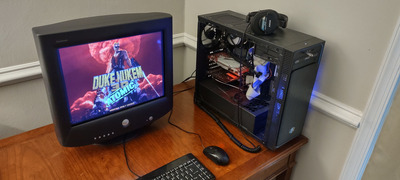Reply 40 of 106, by VDNKh
- Rank
- Newbie
Joseph_Joestar wrote on 2022-04-05, 07:52:VDNKh wrote on 2022-04-05, 01:37:I've also been trying to make heads and tails of the memory pointers in the registers but I'm not a computer scientist. Relevant ones are in red. The top two are listed as the "VIA Standard Host Bridge" in Windows and control AGP and GART. In red is the Base GART Low Address. The bottom 2 are PCI/PCI bridges that show up as "VIA CPU to AGP2.0/AGP3.0 Controller" in Windows (confused yet?). They don't expose any AGP configuration but the registers in red are also partially responsible for mapping the GART. I think... I hope that someone who really knows what they're looking at can help out. I've searched Google far and wide for this problem and while many report it, no solutions are provided.
One thing does come to mind though. Assuming that you get proper performance under WinXP, it might be worth checking how these devices are configured under that OS in comparison to Win98.
It's flawless in XP SP3. AGP Memory is correctly listed and I get full performance. I made a post about it here. I figured out that the skewed performance I saw in 98, like the very high 3D transfer rate on an older driver and high Readback: Small bandwidth was a result of caching. Interestingly, in some driver between 61.76 and 45.23, NVidia implemented their own GART driver and I get a grand total of (IIRC) 32 MB of AGP aperture. It does help performance a lot (~17,100 vs. ~12,500 3DMark01) but it's still a far cry from what a 5950U is fully capable of. It's another piece I can investigate to see if I can get VIA's implementation to work properly in 98.
I did do a comparison to XP, but it uses the UAGP 3.5 driver, which didn't seem like a good comparison. With what I know now though I'm going to take a more carful look at it.
